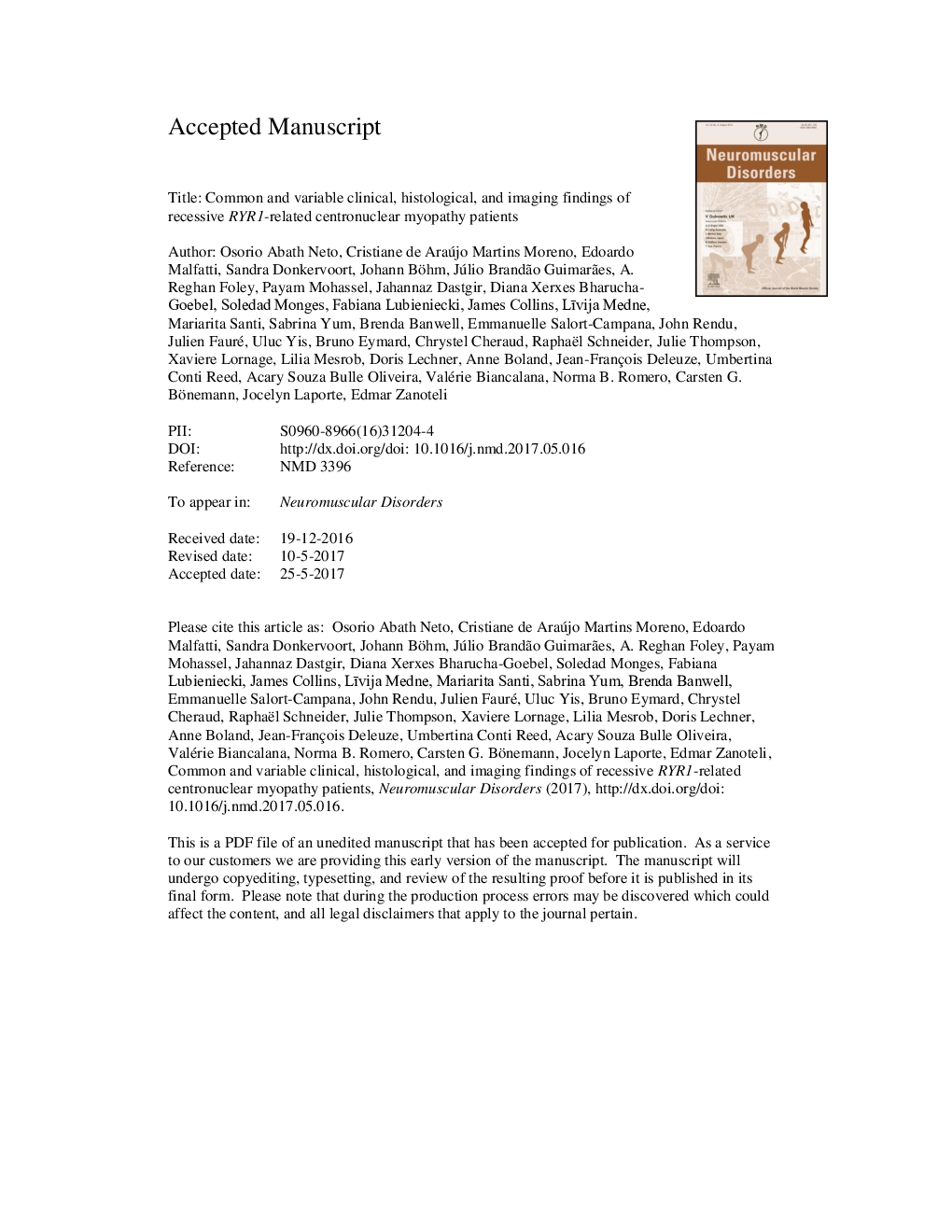| Article ID | Journal | Published Year | Pages | File Type |
|---|---|---|---|---|
| 8689985 | Neuromuscular Disorders | 2017 | 35 Pages |
Abstract
Mutations in RYR1 give rise to diverse skeletal muscle phenotypes, ranging from classical central core disease to susceptibility to malignant hyperthermia. Next-generation sequencing has recently shown that RYR1 is implicated in a wide variety of additional myopathies, including centronuclear myopathy. In this work, we established an international cohort of 21 patients from 18 families with autosomal recessive RYR1-related centronuclear myopathy, to better define the clinical, imaging, and histological spectrum of this disorder. Early onset of symptoms with hypotonia, motor developmental delay, proximal muscle weakness, and a stable course were common clinical features in the cohort. Ptosis and/or ophthalmoparesis, facial weakness, thoracic deformities, and spinal involvement were also frequent but variable. A common imaging pattern consisted of selective involvement of the vastus lateralis, adductor magnus, and biceps brachii in comparison to adjacent muscles. In addition to a variable prominence of central nuclei, muscle biopsy from 20 patients showed type 1 fiber predominance and a wide range of intermyofibrillary architecture abnormalities. All families harbored compound heterozygous mutations, most commonly a truncating mutation combined with a missense mutation. This work expands the phenotypic characterization of patients with recessive RYR1-related centronuclear myopathy by highlighting common and variable clinical, histological, and imaging findings in these patients.
Related Topics
Life Sciences
Neuroscience
Developmental Neuroscience
Authors
Osorio Abath Neto, Cristiane de Araújo Martins Moreno, Edoardo Malfatti, Sandra Donkervoort, Johann Böhm, Júlio Brandão Guimarães, A. Reghan Foley, Payam Mohassel, Jahannaz Dastgir, Diana Xerxes Bharucha-Goebel, Soledad Monges, Fabiana Lubieniecki,
